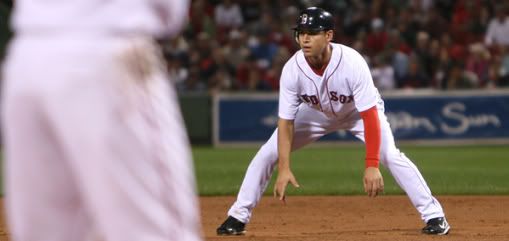The Hardball Times attempted to rank the best outfield arms of 2007. This is the third year that they've attempted to measure outfield arms with their own sabermetric formula. John Walsh who created the system to measure outfield arms claims his systems is "concise". And to his credit, he does measure a multitude of factors, such as how often a runner is thrown out or held from advancing in virtually every situation imaginable.
As for the best outfield arms of 2007, according to the formula, here are the top arms based on how many runs they saved their teams (according to Walsh):
1. Alfonso Soriano: 17.0
2. Mike Cuddyer: 14.6
3. Jeff Francoeur: 12.2
4. Shane Victorino: 12.2
5. Delmon Young: 10.8
6. B.J. Upton: 8.5
7. Willy Teveras: 6.1
8. Alex Rios: 5.6
9. Jim Edmonds: 5.6
10. Mark Teahan: 5.3
11. Ichiro Suzuki: 5.2
12. Ryan Freel: 5.0
13. Melky Cabrera: 4.5
2. Mike Cuddyer: 14.6
3. Jeff Francoeur: 12.2
4. Shane Victorino: 12.2
5. Delmon Young: 10.8
6. B.J. Upton: 8.5
7. Willy Teveras: 6.1
8. Alex Rios: 5.6
9. Jim Edmonds: 5.6
10. Mark Teahan: 5.3
11. Ichiro Suzuki: 5.2
12. Ryan Freel: 5.0
13. Melky Cabrera: 4.5
Looking at those names, I didn't have any issue with the rating system. In fact, I was excited about it. But when I saw the ratings for the Red Sox, I became a bit skeptical. Here they are:
Coco Crisp: - 0.2
Manny Ramirez: -1.5
J.D. Drew: -3.1
Manny Ramirez: -1.5
J.D. Drew: -3.1
Now I don't know about you, but I find it hard to take a system seriously that says Coco Crisp has the best outfield arm on the Red Sox. And I'm even more critical when the same system says that Coco Crisp actually has an almost average arm. As someone who watched almost every Red Sox game last year I can confidently say that Coco Crisp clearly has a well below average arm. It's sabermetric formulas like this one, which are in conflict with common sense at times, that cause people to doubt sabermetrics in general.
So John Walsh's system likely needs a little tweaking. I have a feeling it's not ballpark independent. The fact that right Field in Fenway Park is so large probably influences Drew's rating negatively. From what I've seen, Drew has a slightly above average arm for an outfielder. At least it's pretty apparent that Drew has a better arm than Manny Ramirez. I'd also be curious to know what Walsh considers to be holding a runner.
If a hitter drives the ball to the wall, and then runs into second base as the outfielder backtracks to retrieve the ball, is that the same as a hitter advancing to second base on a misplay by the outfielder? And if a ball is hit down the line in right field at Fenway Park, it's going to take a lot longer for the outfielder to retrieve the ball than it would a ball was hit down the left field line in Fenway. I doubt Walsh's system factors this in.
I'd also be curious as to how he weights his factors. Stopping a runner from going from first to second, and getting into scoring position, obviously has a different value than stopping a runner from going from second to third. I wonder if he weights those two factors accordingly.
But I have to give Walsh a lot of credit for trying. I don't see why someone wouldn't be able to eventually come up with a rather accurate sabmermetric formula for rating outfield arms. And with a little tweaking, Walsh's system could be improved. Sabermetric formulas are always being refined and improved to be more accurate. It's rare that a complicated sabermetric formula is created, and then not improved on somehow down the line.















